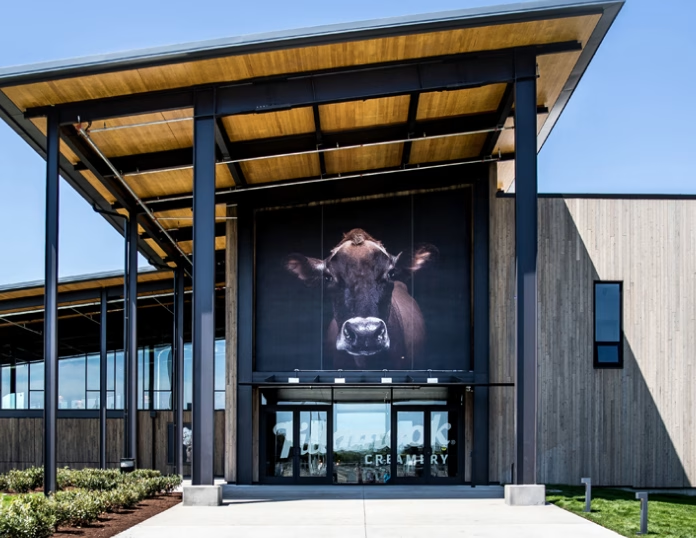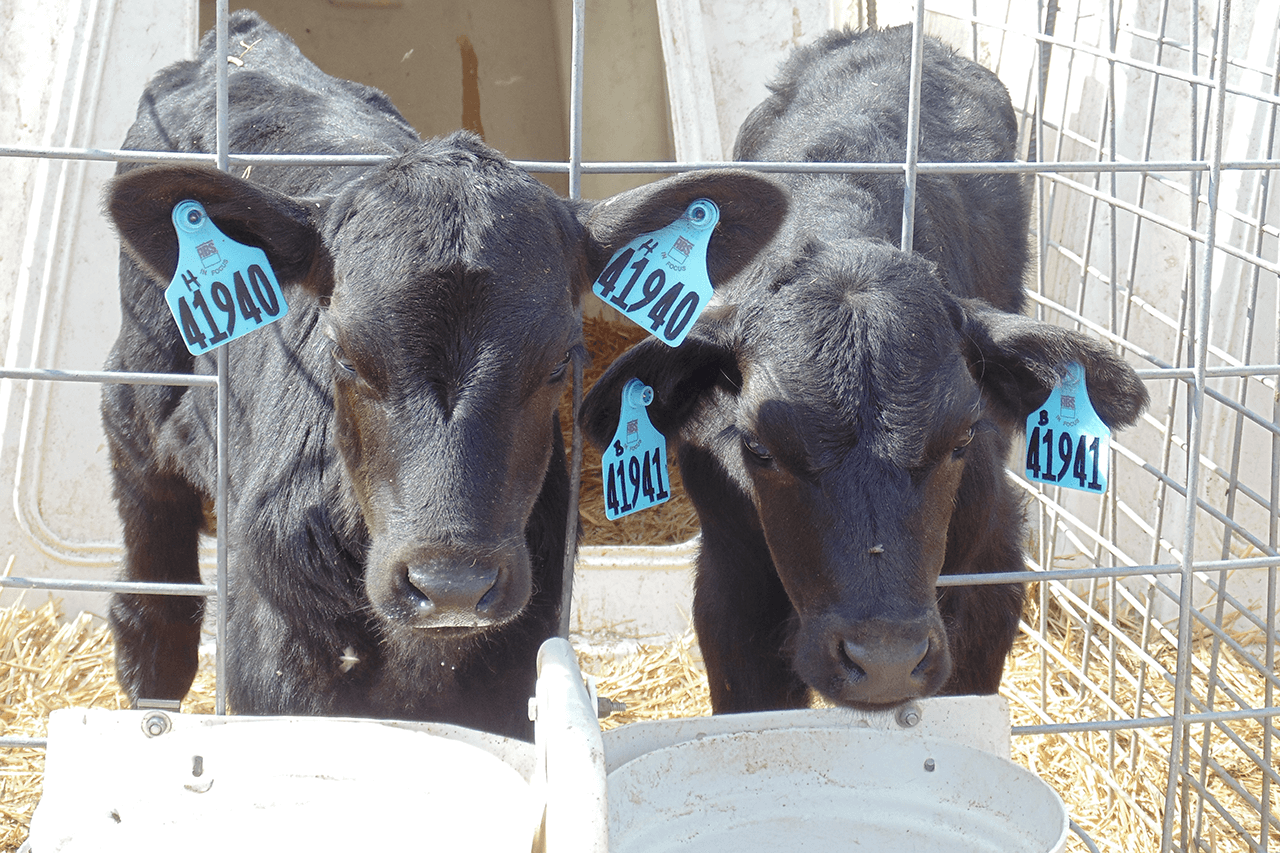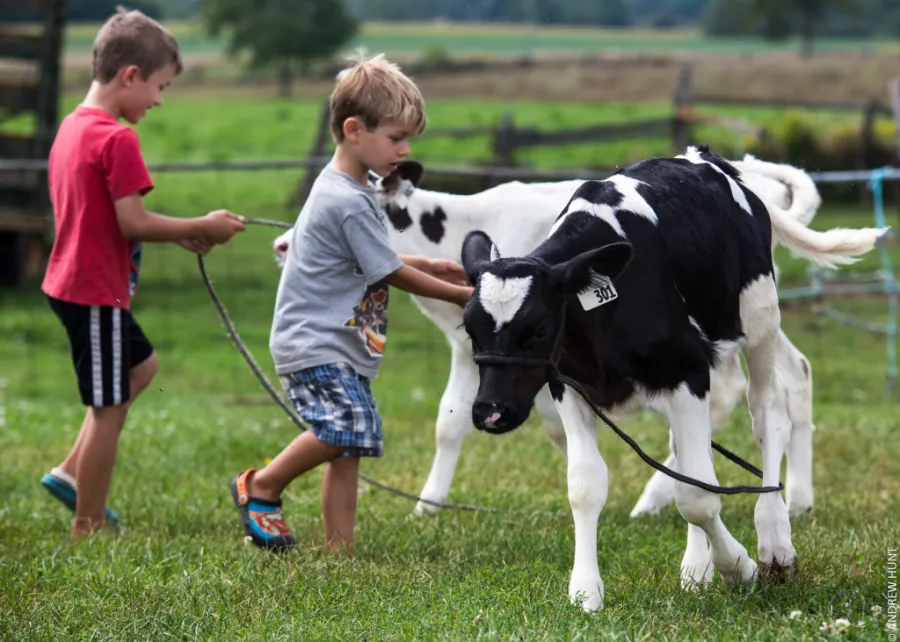Explore how Tillamook’s intelligent growth strategies have created a better future for its dairy farmers. Discover their secrets to success and how you can use them, too.
Summary: Can you imagine a small cooperative transitioning into a national powerhouse in a decade? That’s the incredible story of the Tillamook County Creamery Association (TCCA). Since its humble beginnings in 1909, TCCA has seen its annual sales skyrocket nearly 250%, reaching over $1.2 billion. This remarkable growth has provided stability for its 60 farmer-owners on the Oregon Coast, ensuring their farms remain sustainable amidst fluctuating market conditions and rising costs. CEO Patrick Criteser’s vision to move beyond a regional presence and win consumers nationwide has been a critical driver. Now, with new product lines and strategic investments, TCCA’s success provides valuable lessons for other dairy producers. “It’s making small farms sustainable, where a lot of other places throughout the country, small farms are struggling,” said Shannon Lourenzo, Chairman of TCCA. Under Criteser’s leadership, the cooperative expanded its reach beyond the Pacific Northwest, focusing on localized markets and reinvesting brand-building profits. The ‘Win the West’ program laid the groundwork for long-term growth, and Tillamook’s national expansion 2018 included rebranding, increased distribution, targeted marketing, and strategic collaborations. The cooperative diversified its product line beyond cheese to include ice cream, butter, yogurt, sour cream, cream cheese spreads, and frozen meals. CEO David Booth now emphasizes “measured growth” rather than taking risks.
- TCCA has grown from a small cooperative to a national powerhouse, increasing sales by nearly 250% to over $1.2 billion.
- Expansion has provided stability and sustainability for its 60 farmer-owners despite fluctuating market conditions and rising costs.
- CEO Patrick Criteser’s strategic vision to move beyond regional markets has been crucial to this growth.
- The cooperative diversified its product line to include ice cream, butter, yogurt, sour cream, cream cheese spreads, and frozen meals.
- The ‘Win the West’ program laid the groundwork for national expansion in 2018, which included rebranding and increased distribution.
- Current CEO David Booth emphasizes “measured growth” to ensure long-term success and stability for the cooperative and its farmer-owners.
- TCCA’s approach provides valuable lessons for other dairy producers looking to achieve similar growth and stability.

Imagine the ripple effect of a regional dairy brand growing into a national powerhouse. This is the story of the Tillamook County Creamery Association. Their expansion not only led to a 250% increase in sales over a decade, reaching over $1.2 billion, but also changed the game for small dairy producers along the Oregon coast. More importantly, this growth brought unprecedented stability and support to its farmer-owners, securing their livelihoods and making small farms sustainable in the local community.
“It’s making small farms sustainable, where a lot of other places throughout the country, small farms are struggling,” said Shannon Lorenzo, chairman of the cooperative’s board of directors. This transformation has boosted the cooperative’s success and provided a lifeline to small farms, demonstrating the power of collective action in the face of industry challenges. The cooperative’s success is a source of pride for all involved, a testament to their hard work and dedication.
From Humble Beginnings: Innovating Through Adversity
The Tillamook County Creamery Association (TCCA) was founded in 1909 by a group of ten individual dairies, each donating $10, and its adventure started on the picturesque Oregon Coast. The cooperative began with a basic but quality-focused cheese recipe using just four ingredients, which is being used today. One of their first obstacles was the region’s unpredictable and sometimes severe rainy weather, hampered dairy farming operations. The more excellent prices of hay and gasoline required to carry commodities to this distant locale exacerbated their operating issues. Faced with these hurdles, the cooperative’s founding members demonstrated remarkable perseverance, innovating and committing to quality manufacturing to secure long-term viability and expansion. This unwavering commitment to quality has been a cornerstone of their success, reassuring customers and farmers of the brand’s integrity.
Reaching the Crossroads: Strategic Vision and Expansion
Tillamook was dealing with rising issues in the early 2010s. Regional constraints, such as high transportation costs and a competitive dairy market, reduced the cooperative’s profitability. These constraints showed that keeping a regional brand would give insufficient financial security to sustain its member farms.
Patrick Criteser, a sixth-generation Oregonian with expertise at large organizations like Nike and Disney, joined in 2012. Criteser’s leadership was a turning point for Tillamook. He realized that Tillamook needed to broaden its reach outside the Pacific Northwest to grow. He presented an ambitious strategy for national development, stressing the need to position Tillamook goods as both quality and accessible. This strategy shift sought to capitalize on the brand’s reputation for excellence while expanding into new areas around the United States.
Tillamook started to “win the West” under Criteser’s leadership by focusing on localized markets and honing their strategy before launching a national campaign. This methodical technique reduced risks and enabled the cooperative to reinvest profits in brand building, laying the stage for long-term growth and stability.
Tillamook’s Strategic Expansion: Winning the West and Beyond
Tillamook’s strategic growth started with the ‘Win the West’ program, a determined drive to increase the brand’s presence and reputation in the Western U.S. The cooperative revised its product offers, emphasizing quality and customer perception. This strategic program was a significant milestone, distinguishing Tillamook in a competitive market by enhancing cream content and assuring natural aging. They felt that customers would recognize and pay for the value, leading to a commitment to buy Tillamook goods regularly.
Tillamook could fine-tune its plan and receive helpful input by testing it locally before implementing it more broadly. The success in the Western market justified their strategy, demonstrating that buyers valued excellent quality and were ready to pay more. This first accomplishment instilled the confidence and funding required to engage further in brand development.
Tillamook began its national growth in 2018, fueled by localized successes. This phase comprised a complete rebranding, with a new logo and revised packaging to appeal to a larger audience. The rebranding was more than cosmetic; it represented the cooperative’s commitment to upholding high standards and uniformity throughout all markets.
The expansion approach was multifaceted. Tillamook increased its distribution methods to make its products available nationally. They implemented targeted marketing strategies to increase brand awareness and loyalty nationwide. This phase required strategic collaborations with merchants and focused on customer education about the product’s distinctive attributes.
Tillamook is now regarded as one of the fastest-growing dairy brands in the United States, with approximately one in every four homes buying its products. The cooperative’s emphasis on quality and intelligent market positioning has continued to fuel its exceptional development trajectory.
Diversification: The Key to Tillamook’s Resilient Growth
As every wise businessperson understands, updating and growing product lines is critical to competitiveness. Tillamook’s diversification approach best shows this. Over time, they’ve expanded beyond their legendary cheeses to include ice cream, butter, yogurt, sour cream, cream cheese spreads, and even frozen dinners. These additions aren’t merely to fill up shelf space; each new product entrance is a deliberate attempt to appeal to diverse customer interests and gain a larger market share.
Take their ice cream, for instance. Although cheese remains Tillamook’s signature product, ice cream has risen significantly, particularly during the past decade. This is not a coincidence but rather an intentional shift to suit customer demand for high-quality dairy sweets. Such diversification has increased the cooperative’s income sources while mitigating the risks associated with fluctuating milk prices and shifting customer preferences.
Tillamook’s product line diversification has lessened its reliance on any particular product, resulting in more consistent and predictable income for its farmer-owners. This strategy improves the cooperative’s economic health and demonstrates that small-scale farmers may prosper via innovation and adaptability. Diversification is critical to Tillamook’s vigorous development plan in a continuously changing market.
Financial Stability: The Core of Tillamook’s Success
Tillamook’s fantastic ascent to popularity has been driven by brand expansion and nurturing the cooperative’s lifeblood—its farmers. Tillamook’s expansion resulted in more financial security for its farmer-owners.
Shannon Lorenzo, chairman of the cooperative’s board, puts it succinctly: “Without that growth, we wouldn’t have been able to keep up.” That is where the brand’s strength has helped us get through this.” He refers to the steady and more predictable compensation arrangements that have protected farmers from the turbulent market swings. When circumstances were rough, such as during years of record feed costs or increasing interest rates, more significant co-op dividends offered a vital cushion. According to Lorenzo: “It’s making small farms sustainable, where a lot of other places throughout the country, small farms are struggling.”
John Seymour, a fifth-generation farmer and TCCA board member, shares this attitude. “I don’t see farmers leaving business due to financial difficulty here. “It appears that more people are getting older, and their children do not want to do it,” he says. Consistent income and co-op distributions enable farmers to choose long-term sustainability above short-term survival, resulting in a more resilient agricultural community.
Strategic Investments in Production: The Backbone of Tillamook’s Growth
Tillamook’s tremendous expansion is based on significant investments in manufacturing facilities. The cooperative maintains three core plants: the historic Tillamook Cheese Factory on Oregon’s beautiful Highway 101, a high-capacity factory at the Port of Morrow in Boardman, Oregon, and the most recent addition, a cutting-edge facility in Decatur, Illinois.
Tillamook’s first excursion outside its home state will begin in early 2025 with the Decatur factory. This factory will only create ice cream and employ 45 people, highlighting ice cream’s importance in the cooperative’s expansion plan. According to CEO David Booth, who took over in the summer of 2023, Tillamook’s new facility will improve supply chain efficiency and lower logistical costs.
The Decatur plant will strengthen Tillamook’s footprint in the Midwest, enabling the cooperative to service its increasing customer base better. Tillamook’s distribution had previously been confined to the Northwest, but rising demand necessitated a wider reach. Tillamook’s new mill allows for quicker, fresher delivery nationwide, boosting the company’s reputation for quality.
This expansion is about addressing present demand and preparing for future development. Tillamook reduces the risk of regional interruptions by spreading its manufacturing capacities globally, paving the door for future market penetration. The cooperative’s modern facilities are a foundation for long-term development and expansion into local and international markets.
From Regional Favorite to National Staple: The Role of Consumer Loyalty
Tillamook’s prominence has relied heavily on market penetration and customer acceptance. Tillamook goods are purchased by roughly one out of every four families in the United States, demonstrating the brand’s worldwide appeal and savvy marketing. Tillamook’s reputation for excellence is a critical component of its success. They remained committed to employing high-quality ingredients and traditional processes, which appealed to customers seeking authenticity and better flavor.
Consumer loyalty has also played an important role. Tillamook consumers are more than simply casual purchasers; they are ardent supporters. This brand devotion is due to Tillamook’s continuous quality and unique product ranges. For example, adding new tastes and diverse dairy ingredients contributed to the brand’s freshness and attractiveness. Their focus on high-quality yet affordable dairy products has been successful, resulting in a solid and devoted customer base.
Such widespread market penetration demonstrates the strength of Tillamook’s brand equity. It shows how they established themselves as a dairy producer and a trusted brand in kitchens throughout America. This degree of customer response is not accidental; it results from meticulous planning, quality assurance, and a grasp of changing consumer tastes.
Community Impact: Economic Stability, Tourism, and Sustainability
Tillamook’s expansion has greatly helped the local community by increasing employment, tourism, and environmental sustainability. As of 2023, the cooperative employed over 1,100 people, a 69% increase from 2012. This employment growth has brought much-needed economic stability to the Oregon coast.
Tourism has been an essential part of Tillamook’s community influence. In 2023, the Tillamook Creamery tourist center received more than a million people. These tourists spent approximately $300 million locally, significantly contributing to the regional economy. The visitor center’s engaging activities, such as guided tours and sampling stations, strengthen customer relationships with the brand, increasing its local and national visibility.
Tillamook’s environmental achievements are similarly impressive. In 2017, the cooperative established a stewardship charter to formally commit to sustainability. These projects include various endeavors, including water conservation, animal welfare, and local community assistance. Furthermore, Tillamook received B Corporation designation in 2020, demonstrating its commitment to social and environmental performance, accountability, and openness.
Tillamook, led by Patrick Criteser, has championed several ecological projects, including water conservation and using more sustainable agricultural techniques. These initiatives appeal to environmentally sensitive customers and reflect a business culture prioritizing community responsibility and long-term prosperity.
Poised for the Future: Expanding Horizons with Strategic Vision
Tillamook’s leadership sees an excellent opportunity for local and international expansion. The cooperative intends to investigate new sales channels, such as convenience shops, which might be critical entry points to boost customer participation. Consider getting a Tillamook cheese snack or a pint-sized ice cream during a short visit to your local gas station; these practical formats offer Tillamook’s exceptional goods to a broader audience.
Tillamook’s international reputation for quality dairy products provides a solid basis for growth. The cooperative’s strong reputation among worldwide importers and distributors positions it well for global expansion. Erick Garman, trade manager for the Oregon Department of Agriculture, points out that U.S. and Northwestern dairy products are renowned for their exceptional quality, providing Tillamook a particular edge overseas.
On the other hand, Tillamook wishes to proceed slowly with its expansion. CEO David Booth emphasized that the cooperative’s goal is “measured growth,” focusing on building on its achievements rather than taking risks. This strategic strategy assures that each growth step strengthens the cooperative’s financial stability and is consistent with its long-term objectives.
Furthermore, Booth sees prospects in new domestic sales channels and overseas markets as critical to future development. Tillamook’s limited but prospective foreign presence illustrates that the brand’s appeal crosses boundaries, allowing further distribution and market share.
Tillamook’s strategy for the next decade focuses on expanding its market presence while remaining committed to quality and community. By proactively exploring new sales channels and global markets, Tillamook is well-positioned to maintain its development and assist its farmer-owners for the foreseeable future.
The Bottom Line
Tillamook’s unique path from a tiny regional dairy co-op to a national dairy powerhouse exemplifies how deliberate expansion and diversification can significantly influence farmers’ lives. Through innovation, strategic development, and an emphasis on quality and customer trust, they have provided financial security for their members while promoting community, environmental responsibility, and national prominence. Their tale demonstrates how forward-thinking leadership and unshakable devotion to fundamental principles can transform problems into opportunities, guaranteeing sustainability even in a highly competitive industry.
Tillamook’s experience is a compelling lesson for other dairy farmers navigating the changing landscape: adaptation, innovation, and a relentless emphasis on growth and quality can maintain and progress the dairy industry. Are you prepared to take notes and follow a similar road of perseverance and success?
Learn more:
- Can Maine Reverse Its Dairy Farm Decline?
- The Future of Dairy Farming: Insights for US and Canadian Farmers!
- How Dairy Farmers Can Meet Consumer Demand for Transparency and Sustainability
 Join the Revolution!
Join the Revolution!
Bullvine Daily is your essential e-zine for staying ahead in the dairy industry. With over 30,000 subscribers, we bring you the week’s top news, helping you manage tasks efficiently. Stay informed about milk production, tech adoption, and more, so you can concentrate on your dairy operations.







 Join the Revolution!
Join the Revolution!










